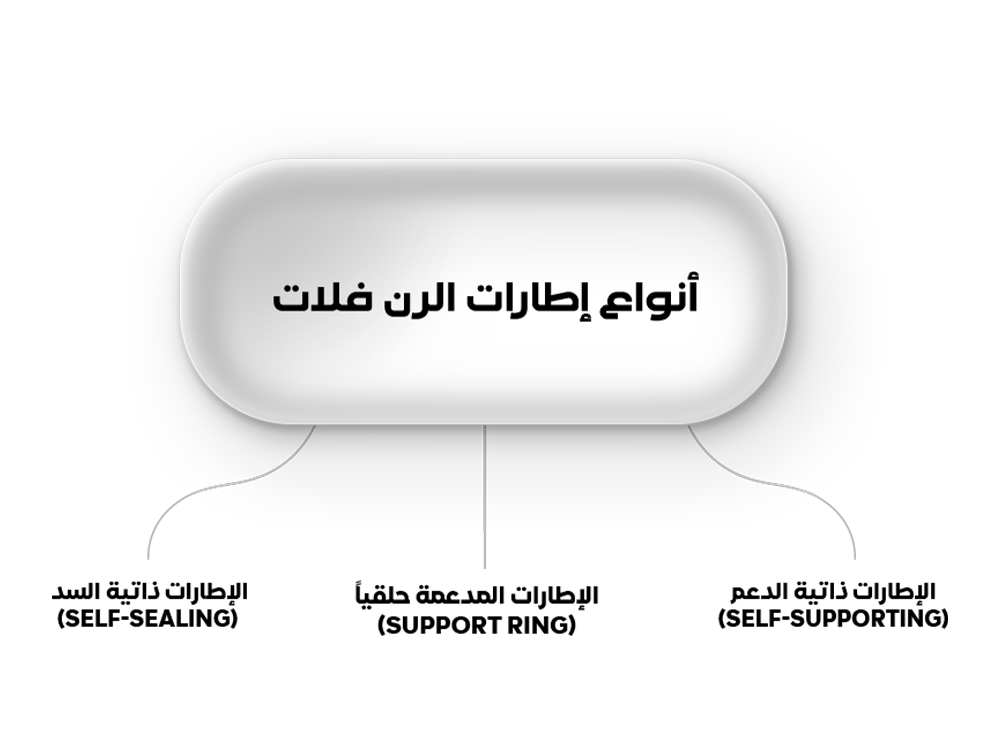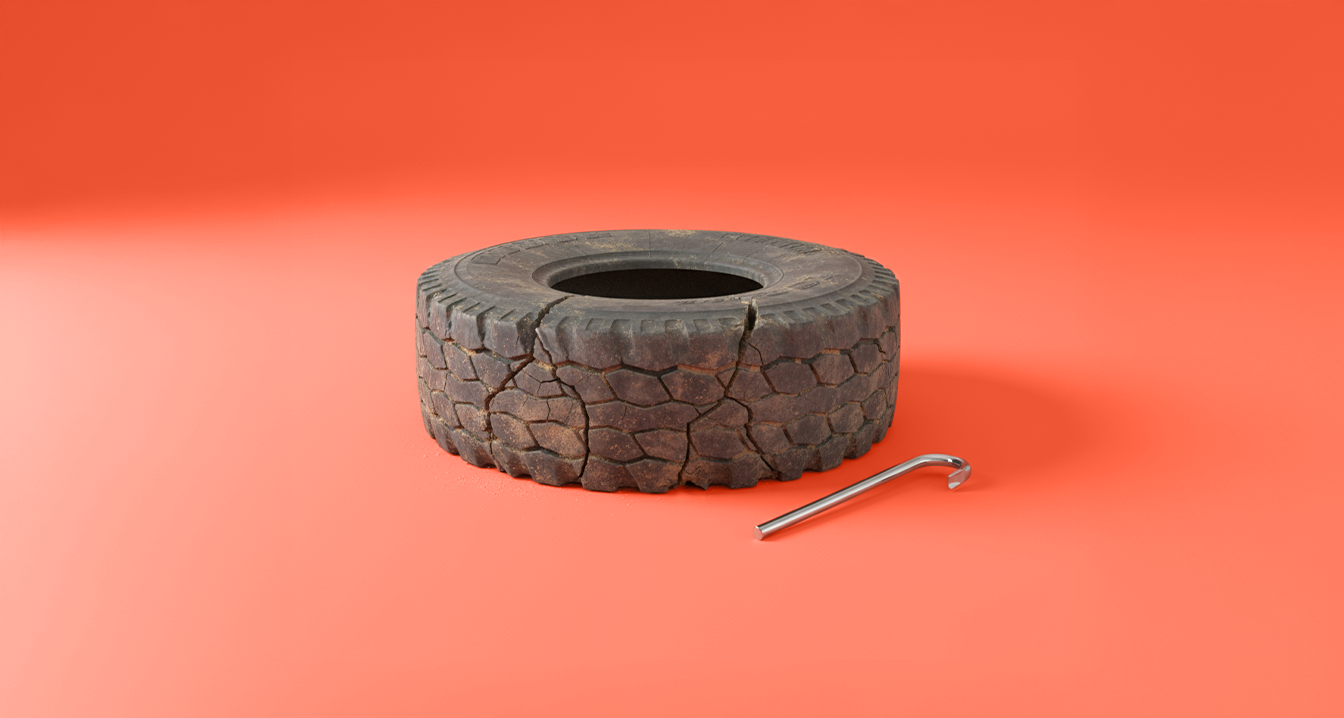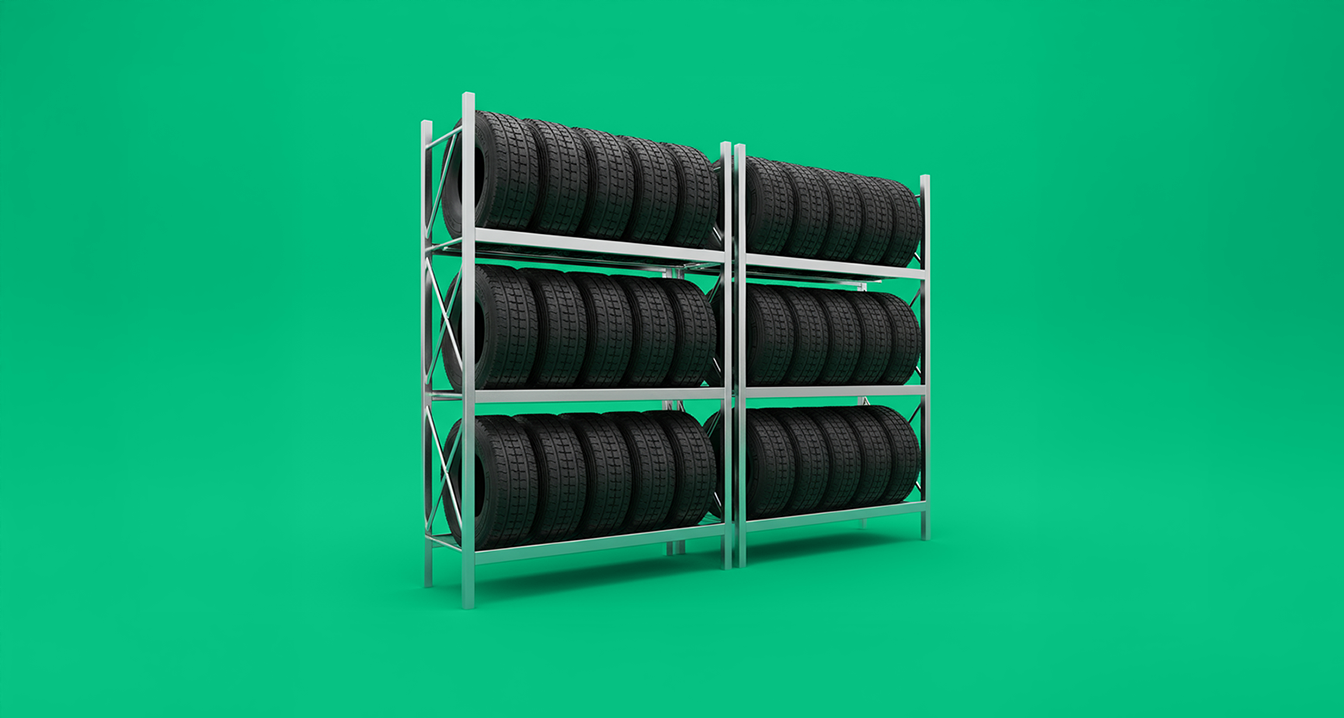They are not just technically advanced tires, but rather a radical transformation in the tires of vehicles and large trucks, because they provide a direct practical solution to many traffic problems and possible risks due to serious accidents. Imagine this scenario: a truck traveling at 100 km/h, on a busy highway, or there was sudden congestion. With this sudden, the tire exploded horribly. The first thing that happens is losing control of the truck and deviating from the specified path with a great risk of collision with vehicles stuck in traffic. Here at this moment, the value of run-flat tires appears. They are able to continue traveling even after the air runs out Inside the tires, they are precisely engineered to carry the weight of the vehicle they are equipped with with the ability to travel at a speed of 80 kilometers per hour and a distance of 160 kilometers. This is the responsibility of its manufacturer. Run-flat tires travel much lower distances depending on their quality and the quality of the materials they are made of.
With this technology in tires, it eliminates the need for spare tires, saving at least 30 kg of truck weight, while providing additional space on board the truck, but the most important thing is that it reduces accidents related to tire explosion by 34%. Therefore, its cost is 20-50% higher than the prices of regular tires, noting that they are difficult to install except with dedicated tools because they are heavier, denser and thicker in their sidewalls. These tires have been adopted by German companies (BMW & Mercedes), making them more widespread and reliable in many parts of the world. Thus, their spread has been achieved in Many countries have become a favorite choice for many drivers, especially truck drivers, because they provide them with many advantages and safety required on highways.
The importance of flat tires, known as runflat tires, lies in the fact that they are more susceptible to difficult environments that make normal tires explode quickly. Flat tires (Runflat) resist these conditions very much and overcome them more effectively than normal tires that make a truck stop in place when it is hit by any scratch or dent. In a few lines of this article, we will have an appointment through which we will understand the history of flat tires and learn their different components, while identifying their practical advantages and disadvantages, giving the reader the answers they are looking for.
What is the history of run-flat tires (flat tires)?
The first attempts to develop Runflat tires started but failed because of their heavy weight and inability to withstand the large weights of heavy trucks. They were unable to deal with the weights of small cars at the time. Even after their development and the qualitative shift in the quality of truck tires, Runflat tires were not marketable because the rest of the tires were less expensive and more efficient in dealing with commercial roads at the time, which were largely random, until the time of polymers supported by Kevlar fibers came, which added tremendous strength with great flexibility in dealing with huge weights. The revolutionary developments in the manufacture of weight-resistant materials made Run-flat tires significantly topped the scene in the nineties by relying on Run-flat tires in its cars and huge trucks, which have been considered the crown of mechanical industries from that time to this day.
In conclusion, the technologies needed by tire manufacturers at the beginning of the Ren Flat tire manufacturing projects were ahead of their time. Many of these materials were not known to us until a few years ago, as they are based on complex chemical compounds that are formed to form super-flexible and highly rigid materials that can withstand the most difficult environmental and thermal conditions that characterize the environment of the Kingdom of Saudi Arabia and the Arabian Gulf. Thus, Dabak is the end of Al-Misk in the development of vital industries in the Kingdom of Saudi Arabia, as it has worked to provide the most suitable tires for the region that are directly compatible with the road network Business in the Kingdom of Saudi Arabia.
What is the working principle of runflat tires (flat tires)?
Run-flat tires rely on a reinforced internal structure that allows the tire to support the weight of a truck or car even after the loss of air pressure inside the tires. In this internal structure, Runflat tires rely on two types of main supporting systems. The first is the Self-Supporting system and the second system is the Supporting Ring system. In this system, it contains two walls reinforced with highly durable metal fibers that can withstand the weight of the car when the internal air pressure is lost or while the tires are punctured and bent, enabling the tires to continue traveling and working until they reach a workshop Maintenance. The second type of system includes a reinforced rubber ring or a metal ring made of other materials that maintain the shape of tires in the event of air penetration into the tires, which contributes to the continued travel of trucks and vehicles for sufficient distances to reach the nearest maintenance workshop to address the defect. This process avoids the risk of major and terrible accidents due to tires because flat tires, or what are known as runflat tires, provide great protection to the tire structure, preventing it from explosion, disintegration or other problems experienced by normal tires.
In addition to these two types, there is an additional reinforced type, or can be called a reinforced technology, which is called self-sealing tires (Self-Sealing), which in turn has an internal sealing layer that is installed under the tread layer and automatically closes small and medium holes without the need for maintenance or the need for driver intervention. Through this composite process, the tire is able to withstand temporarily and help support the tire sufficiently to prevent a terrible accident, while bearing the weight of the truck and trying to stay on the track without losing goods or the vehicle. It is worth noting that all systems and technologies require a system Air pressure monitoring (TPMS), which a truck or vehicle relies on to alert the driver to any decrease in air pressure in order to be aware of a minor leak due to puncture or shock, in order to avoid surprising the driver with a drop in pressure or air leakage or not notice it at all. In both cases, the driver should be aware of what is happening under his feet.
Run-flat tires, thanks to their reinforced internal structure and advanced technologies such as self-support, supportive ring and self-locking, give the driver additional safety and allow him to continue driving even after loss of air pressure, with the need to rely on a tire pressure monitoring system to ensure safe driving.
Types of Run-flat Tires (Flat Tires)

First: Self-Supporting Tires
This type of tire has a very large reinforced sidewall that is usually reinforced with additional layers of hard rubber, through which it is possible to support the weight of the truck or car after the tires run out of air due to leaks or buffs. This type of tire allows to maintain the shape and structure of the tire to withstand the weight of the whole truck without significant changes leading to technical or technical problems, but it is limited in time depending on its capabilities provided by the tire manufacturer. Its purpose is to prevent accidents and provide sufficient time to reach a maintenance workshop through which to address the problem that caused the lack of air pressure inside the tires.
Second: Ring-supported tires (Support Ring)
Ring-supported tires usually have a reinforced metal or rubber ring. They can be made of a special alloy as approved by the manufacturer. This solid ring is fixed in the inner cuff of the tire, making it in the right place to carry the weight of the truck or vehicle, instead of the support that will be missing in the sidewall of the tires due to loss of air pressure inside the tires, which prevents the collapse or explosion of the tire structure.
Third: Self-sealing tires
These tires contain an adhesive material coated inside the tire and is attached under the section of the base of the tread. This material expands when a puncture or dent occurs until it closes it completely, preventing air leakage. It is effective in dealing with front holes that affect the tread only. It cannot provide protection for holes that affect the sidewall of tires. It is very effective in avoiding front holes and avoiding tire explosion due to shocks, obstacles, etc.
Regardless of the type of resonance flat tires used in your truck, manufacturers clearly state that these techniques were manufactured to serve as a temporary bridge until the maintenance workshops are reached and in order to avoid terrible and sudden accidents. These tires ensure sufficient movement to deal with difficult situations during long trips. The distance traveled by these perforated tires may reach 80 kilometers and speeds of up to 70 kilometers per hour, meaning that they provide nearly an hour of continuous traffic to ensure that the truck does not stop in an inappropriate place or far from maintenance stations.
Thanks to their various technologies, Run-flat tires give you the opportunity to follow the road even after losing air, to be a temporary solution that protects you from sudden risks.
What are the advantages of RUN FLAT TIRES (FLAT TYRES)
- SAFETY AND COMFORT: Run-flat tires allow you to continue driving even after a tire puncture without the need for an immediate stop, or even the need to install a spare tire in dangerous conditions or on long abandoned roads. This saves more driver time and avoids unsafe situations that result in tire change on the roadside.
- Stability and control: These tires are designed to be able to withstand the weight of a truck or car even after the air inside the tires runs out. This is reflected in normal traffic as they are more durable, solid and of higher quality in performance than traditional tires. The sidewalls help maintain the grip of the tires, providing better control of the vehicle after and before the puncture.
- Save space: This is because the vehicles that are equipped with the RV do not need to carry extra spare tires, providing additional space in the storage compartments, which has practical benefits for drivers by reducing the overall weight of the truck.
- Seasonal diversity: Flat or runflat tires are available in several seasonal types, summer and winter, with high performance, all of which provide safety and safety in all weather and different seasons. This makes these techniques very practical because they work under all weather and environmental conditions.
What are the disadvantages and disadvantages of runflat tires
- High cost: Run-flat tires are usually much more expensive than regular tires and the cost of flat or run-flat tires may be more than twice the price of regular tires, depending on their quality and manufacturer. They also tend to wear quickly, which means that they are less old than traditional tires, which increases the cost of replacement.
- Comfort and performance are affected: Due to the rigidity of the sidewall of the Runflat tires, they are less comfortable to drive than their traditional counterparts because they contain a metal ring or reinforced rubber, which makes the noise louder and reduces shock absorption and bumps.
- The impossibility of repair: In many types of flat tires, punctured tires cannot be treated frequently. Punctures cannot be repaired in practice because they are designed to resist certain punctures, but when wounds and punctures worsen, you will have to replace the entire tire.
- Requirements and compatibility: Run-flat tires require very special conditions of use. For example, the vehicle must be equipped with an internal tire pressure monitoring system (TPMS) for protection and warning. It also requires an appropriate height of the wheel lip in order to prevent tires from slipping off the rim when punctured or leaking air. It is also important to avoid mixing normal tires with flat or flat tires in the same vehicle in order to avoid unbalanced control behavior, exposing safety systems to danger and collapse.
How to maintain the RUN FLAT TYRES?
Since the immediate action is after flat or flat tires are damaged, it is important to know how to maintain them regularly, which includes preventive measures in a concentrated manner in order to avoid significant damage to the tires.
Check air pressure regularly: It is very necessary to use a precision air compressor to maintain the recommended pressure accurately and periodically check the internal pressure monitoring system for tires in order to know the real time of air leakage and deal with it at a high speed.
Visual inspection: Drivers should visually check the tires to look for any strange cracks or bulges on the side of the tires. Wheel balance and alignment should be calibrated whenever needed in order to ensure equal wear on all tires and tire surface levels
INSTANT REPLACEMENT: If the Runflat tires are exposed to a strong puncture and the tires are unable to deal with it, it is preferable in this case to replace the tire immediately in order to avoid what may result from repairing it, as it is very difficult to repair the inner layer responsible for preventing the dent hole.
Avoid mixing types: Be very careful not to mix different types of tires in one vehicle. Rather, it is preferable to install one type of runflat tires for all vehicle wheels, which will provide better performance and significantly extend the life of the tires.
The maintenance of Runflat tires depends on periodic inspection of pressure and structure, immediate replacement when damaged, and avoiding mixing different types to ensure performance and safety.
In conclusion, Run-flat tires are not an alternative to traditional tires. They are a suitable choice for some drivers who travel in areas that require high-performance tires that are highly resistant to puncture and cracking. This highlights the importance of this type of tires as they play a vital role in facilitating complex road transport operations that require tires to be solid and impenetrable by sharp stones, glass or other ground obstacles that usually surround the environment in which the truck travels.







